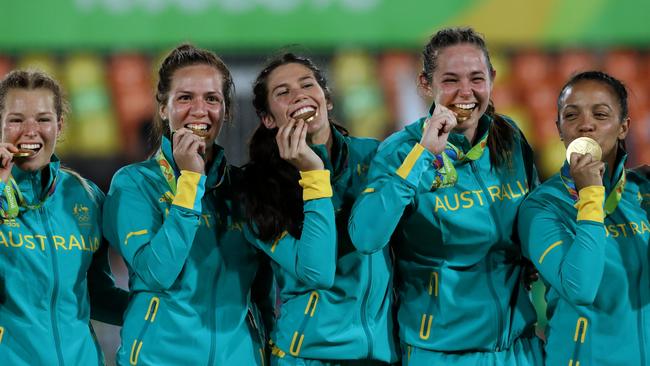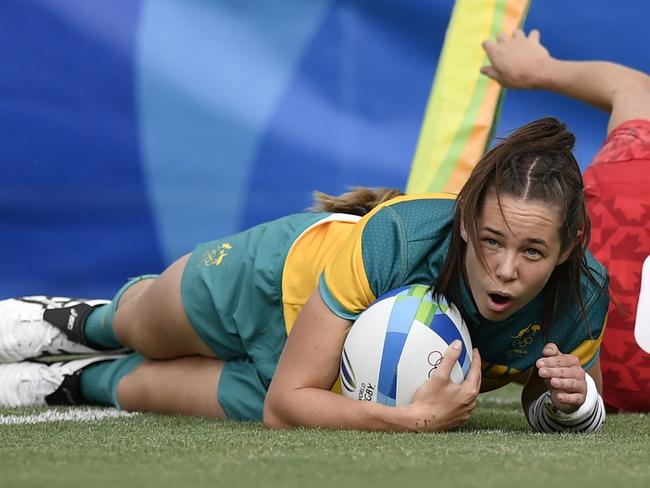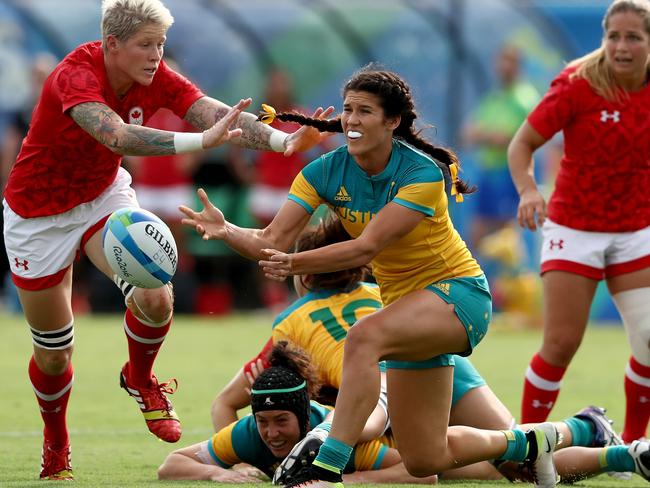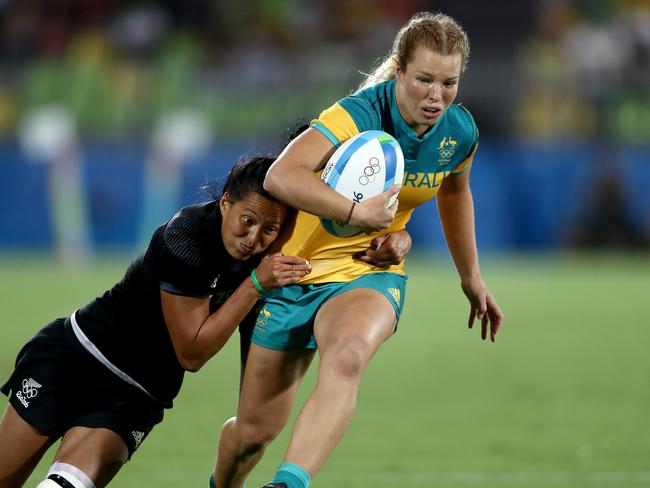Our women’s Rugby Sevens team wasn’t made up of born footy players
THE best female rugby sevens players in the world weren’t even playing the sport until a few years ago, when the plan behind Australia’s success was hatched.

YOU know some sportsmen and women are going to be great from an early age.
You’d think Roger Federer was born with a tennis racquet in his hands, Tiger Woods with a golf club and Ricky Ponting with a cricket bat.
Then there are those who blossom later. Or those that don’t even know they’re talented at a completely different sport to the one they’re playing.
That’s the case for Australia’s women’s Rugby Sevens team. The Aussies were gold medal favourites heading to Rio, and they didn’t disappoint.
They did something our men’s 15-a-side team has barely been able to do in the past 15 years — beat New Zealand. Their 24-17 victory over the Kiwis in the final on Tuesday morning meant all the players would be heading home with some shiny bling.
What made the triumph more remarkable was the fact so few of our girls had a history of playing rugby sevens.
When it was announced the sport would be part of the Olympics in Brazil, Australia began scouring the nation to find the best available talent — from any background — that would give them the best chance of finishing atop the podium in 2016.
The ARU held a series of national talent searches across the country, where interested players were encouraged to come and try out.
It was a stroke of genius.
From hockey, touch football, rugby league and basketball, let’s have a look at where our golden girls came from.
ATHLETICS

Ellia Green was initially planning to run the 100m at the Olympics — but then Rugby Sevens came knocking.
Head coach Tim Walsh recruited her at a talent identification day in Melbourne in 2012, and it’s a decision he’ll never regret. She starred in the final, scoring a try.
HOCKEY

Australian captain Sharni Williams was a hockey player, then a rugby player, then a Rugby Sevens player. The 28-year-old represented the ACT Strikers in the national hockey league before turning to the 15-a-side game, wearing the green and gold at the 2010 World Cup.
She then made her Sevens debut a year later and hasn’t looked back, skippering her country to Olympic glory.
BASKETBALL

Born in Singapore, Chloe Dalton was used to handling a different ball growing up.
She played for the Sydney Flames in the WNBL and had spent 10 years strutting her stuff on the hardwood before she made the change to a surface slightly easier on the knees.
She went to the Warringah rugby club where Sevens made an instant impression — and she did the same. She soon graduated to the NSW squad before earning an Australian jersey.
TOUCH FOOTBALL

You know those signs you see everywhere in Thailand — “same, but different”? Well, that’s sort of what it’s like for our Sevens stars who came from a touch football background.
Yes, the skill set is similar in terms of passing and evasive running, but it’s a whole different game when you introduce tackling, rucking and kicking into the mix.
Charlotte Caslick came from an athletics background — she was a national 800m champion in primary school — then represented Australia at touch football. She made the move to Rugby Sevens in high school, and the change between the sports was huge.
“I was invited to a camp, I was about 16 and there was a girl there who was just massive,” Caslick said in an interview with Fairfax Media. “She was heavier than my dad. At least 90kg. I remember coming home and I’m like, ‘Nup, I can’t do this’. That freaked me out because I thought I had to be just like her.”
It’s that sort of reflection that makes the success of her, Evania Pelite, Alicia Quirk, Emilee Cherry and Gemma Etheridge — all former touch players — so impressive.
SPORTING SMORGASBORD

Take your pick when it comes to Amy Turner. Born in New Zealand, she had a crack at touch footy, rugby and rugby league before settling on Sevens, when she wasn’t driving trucks in the Mt Isa mines, that is.
RUGBY, RUGBY LEAGUE

As so many male players have found out, making the transition from the 15-a-side game, and 13-a-side game to the Sevens format is anything but easy. Quade Cooper failed to make the cut for Rio, and Jarryd Hayne’s attempted code-hop with Fiji after playing in the NRL and NFL was too tough an ask.
But that wasn’t the case for Shannon Parry and Emma Tonegato. Parry played in the 2010 and 2014 Rugby World Cups, and Tonegato played for the Jillaroos (Australia’s rugby league team) as recently as 2013 before making the switch.



